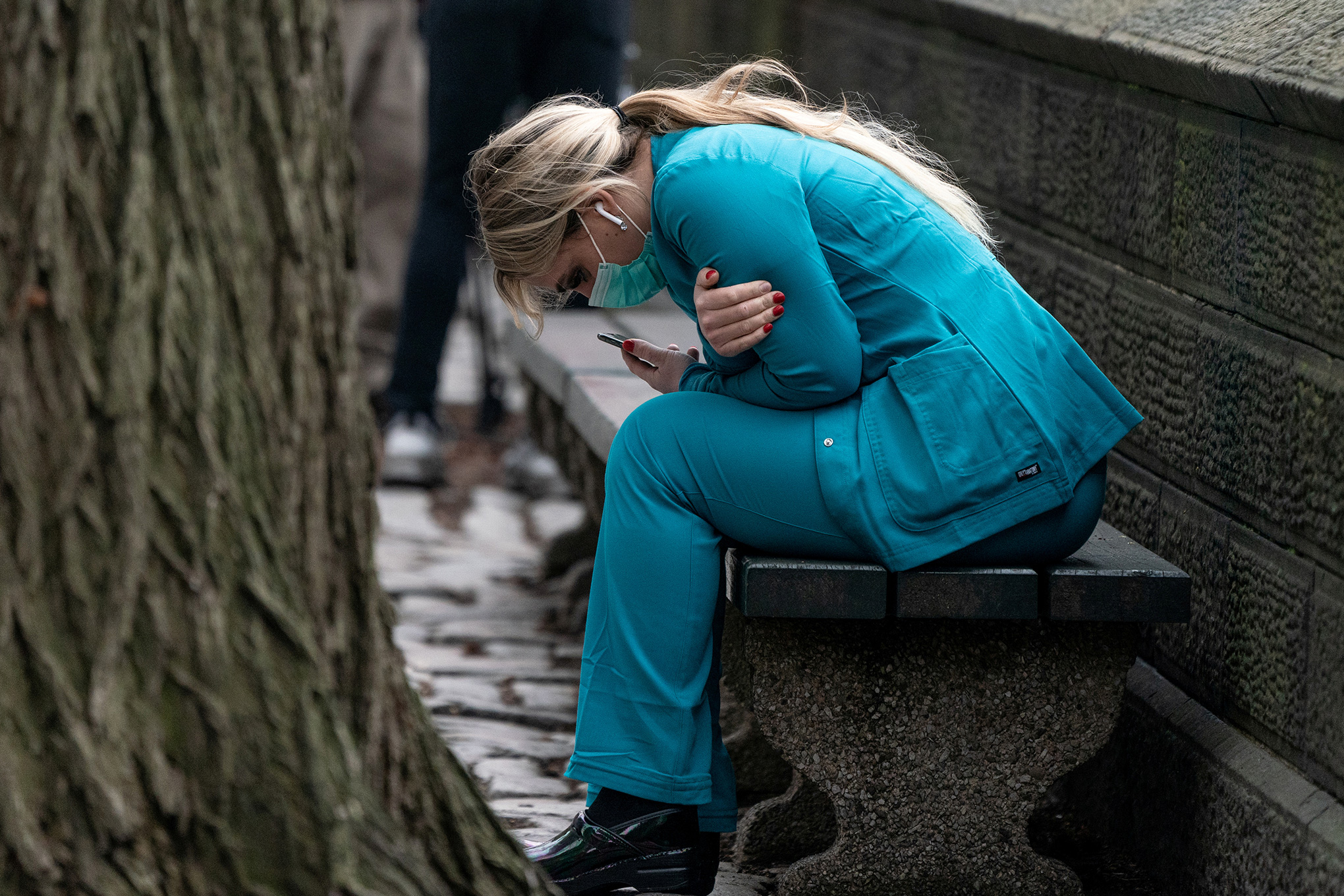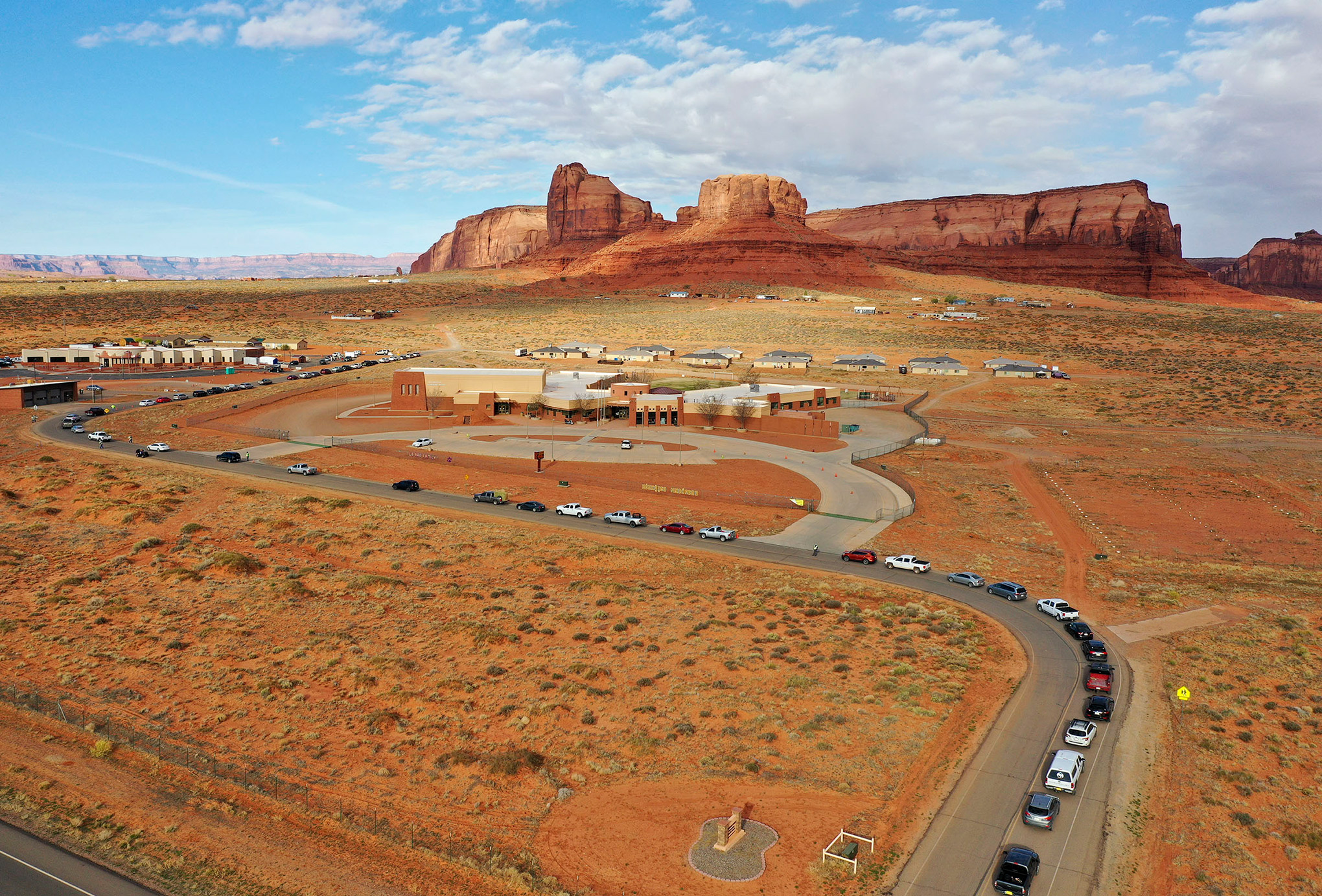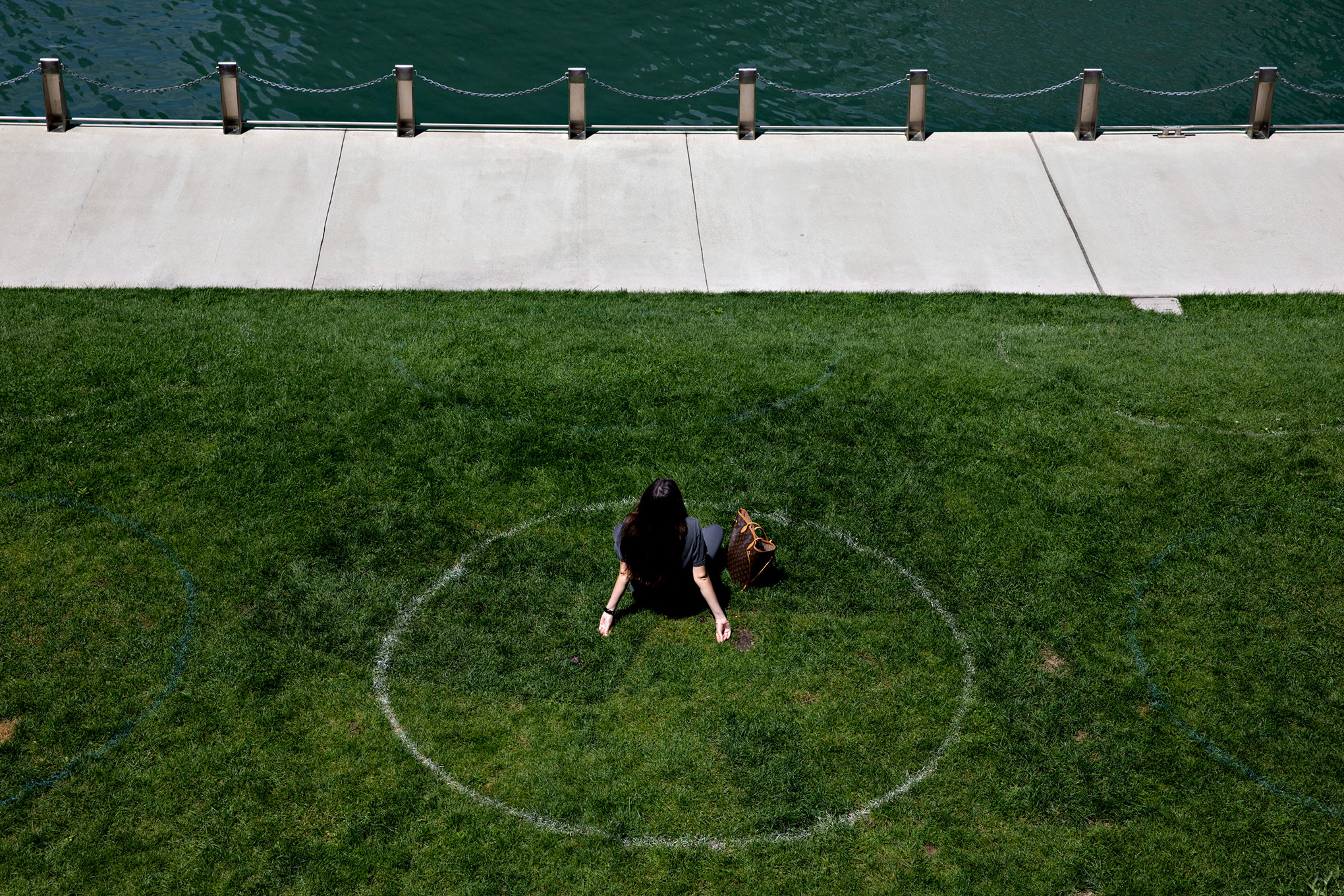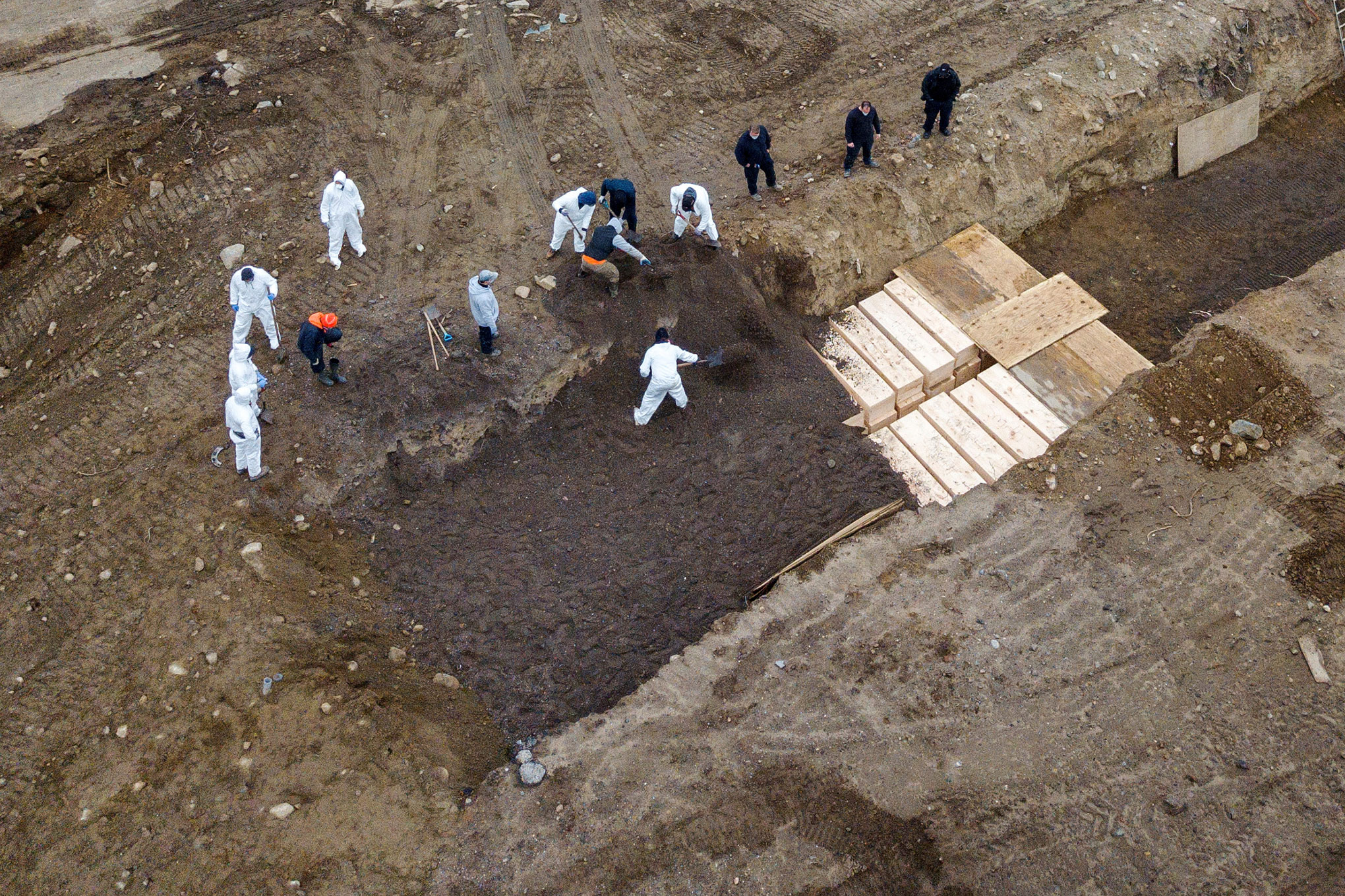
It is a frightening time to live in the United States. COVID-19, a novel disease as ruthless as it is seemingly random, is picking us off by the thousands; even many of those who “recover” may never truly be the same again. The pandemic has exposed the gulf between what this country promises for its citizens and what it actually delivers. And as the U.S. barrels toward Election Day, the outbreak is sure to complicate the voting process, with potentially disastrous results.
For a short time in the spring, it appeared the U.S. was getting a grip on its outbreak. Hard-hit states like New York successfully flattened the curve, thanks largely to a statewide shutdown of nonessential businesses and compliance with new rules requiring people to wear masks and practice social distancing. But as other states began to reopen in late spring and early summer, new hot spots developed, first in the Sun Belt, in states like Texas, Arizona and Florida, and more recently in the Midwest, in states like Indiana, Illinois and Minnesota. On the West Coast, California reported a new single-day high for confirmed cases on Aug. 10; on the East Coast, Virginia did the same on Aug. 7. Across the country, hospitalization rates have gotten frighteningly high, and more deaths seem bound to follow.
The U.S. is surely losing the war on COVID-19, but it did not have to be this way. Of the G-7 countries—the U.S., the U.K., Canada, France, Japan, Germany and Italy—only we have an outbreak that continues to spin out of control. Some other nations, like New Zealand, have even come close to eradicating COVID-19 entirely (a somewhat easier feat in a less populated and more isolated country, to be sure). Depressingly, in the months before the pandemic, the U.S. was considered to be among the countries best prepared to handle a major outbreak.
At this point, we can start to see more clearly why the nation has foundered so miserably. A failure of political leadership at all levels; a distrust of scientists, the media and expertise in general; and deeply ingrained cultural attitudes about individuality and the values placed on life have all combined to result in a horrifically inadequate pandemic response compared to what are traditionally considered the U.S.’s peer nations.
That the U.S. federal government has failed in its duty to protect Americans’ health and well-being in a time of crisis is, by now, abundantly obvious. Despite the best attempts of public-health officials and others, many elected officials in the U.S. did not take the threat of COVID-19 seriously from the jump. By the time it became clear that the virus posed a major threat, federal efforts were confused at best. The government’s disarray was best demonstrated by an April episode in which Jared Kushner, senior adviser to his father-in-law, President Donald Trump, and at the time tasked with orchestrating the federal response to the virus, confusingly claimed that a federal stockpile of ventilators—crucial equipment for saving severely ill patients—was not meant for the states.
“The notion of the federal stockpile was, it’s supposed to be our stockpile—it’s not supposed to be state stockpiles that they then use,” he said, leaving unclear who, exactly, those ventilators were for if not for Americans, the vast majority of whom live in one state or another.
In some instances, the federal response exceeded inadequacy and became downright harmful. Desperate for supplies as the pandemic worsened in early April, some hospital executives, doctors and other caregivers turned to shady dealers to arrange for shipments of overpriced gear from China. At the height of the outbreak, the federal government was intercepting some of those shipments, for reasons that remain unclear. Dr. Andrew W. Artenstein, chief physician executive at non-for-profit health care network Baystate Health in Springfield, Mass., even claimed he had to go so far as to ship personal protective equipment in trucks “cleverly marked as food-service vehicles” to evade possible federal seizure. The story would make for a pretty good Smokey and the Bandit reboot if it wasn’t so maddening.
A complete catalog of Trump’s failures to adequately address the pandemic is the stuff of books, not single articles. But a quick summary: he wasted weeks early on downplaying the virus; he has stubbornly clung to a fantastical belief that the virus will simply “disappear”; he banned many travelers from China but squandered the time the move bought him by failing to set up an adequate testing and tracing program; he encouraged states to reopen ahead of his own Administration’s guidelines; and he has repeatedly cherry-picked statistics that make the situation in the U.S. look far better than it is in reality, most recently in a disastrous interview with Axios on HBO released Aug. 3, in which he mischaracterized the U.S. death rate from the virus. Then there were the masks.
Experts say that one of Trump’s most significant missteps was his refusal until recently to be seen in public wearing a face covering. It’s established science that wearing a facial covering significantly reduces the spread of COVID-19, and a pre-existing culture of mask-wearing in East Asia is often cited as a central reason that many places in that region were able to quickly control their outbreaks. But in a country without such an existing norm, it’s incumbent upon leaders—political and otherwise—to model that behavior.

When Trump appeared in the White House briefing room on April 3 to announce recommendations from the U.S. Centers for Disease Control and Prevention (CDC) that every American should wear a cloth face covering, he undercut the advice of his Administration’s own experts by emphasizing that mask-wearing would still be “voluntary” and that he personally wouldn’t be doing it. Trump, a man long obsessed with self-image, continued to mostly reject masks until a visit to Walter Reed National Military Medical Center on July 11, at which point more than 130,000 Americans had already died of COVID-19. Trump has since softened on mask-wearing somewhat, following pressure from allies like South Carolina Senator Lindsey Graham and Fox & Friends co-host Steve Doocy.
“I view it this way: anything that potentially can help, and [masks] certainly can potentially help, is a good thing,” the President said during a July 21 coronavirus briefing. “I have no problem. I carry it. I wear it. You saw me wearing it a number of times, and I’ll continue.”
But Trump’s early defiance set the tone for his party and his followers, no doubt contributing to the depressingly predictable politicization of mask-wearing. A Pew Research Center survey published on June 25—two weeks before the huge resurgence of the virus in early July—found that 63% of Democrats and Democratic-leaning independents said masks should always be worn, compared to only 29% of Republicans and Republican-leaning independents. Nearly a quarter of Republicans (23%) said masks should “never or rarely be worn.” As the virus rages on and more people view it as an imminent threat, attitudes are changing: 58% of Republicans now say they favor wearing a mask in public, according to a July 23 poll from the Associated Press and the NORC Center for Public Affairs Research—but that’s still far below the 89% of Democrats who say so. Meanwhile, stories of violent encounters between mask skeptics and mask wearers continue to make headlines nearly every week.
Masks aside, the most glaring failure of the federal government has been, and continues to be, a lack of adequate testing infrastructure, which is a key element of pandemic response, as testing shows how bad an outbreak is getting and reveals key hot spots. Testing shortages and delays were a major problem early in the U.S. outbreak before capabilities were ramped up, and are once again plaguing the country as the virus spreads across multiple states. Some Americans say they are waiting more than two weeks for their test results, which researchers say become effectively useless after only two days (the longer people go between getting tested and receiving their results, the bigger the window of opportunity for them to get infected in the interim). The delays—which are being caused by a mixture of labs’ inability to get the necessary supplies to run tests, a lack of cooperation between rival labs, and inadequate federal guidance—have gotten so bad that demand for tests across the U.S. has actually decreased even as the virus continues to spread, a sign that Americans are simply too fed up with waiting for their results to even bother getting tested in the first place. (New rules preventing asymptomatic people from getting tested in some states are also depressing demand.)

Rather than call for more testing capacity, Trump has instead suggested that maybe the U.S. should be testing less. He has repeatedly, and incorrectly, blamed the recent increase in cases in the U.S. entirely on increased testing. While the U.S. is indeed running more tests than any other country, the percentage of those tests coming back positive increased from about 4.5% in mid-June to nearly 8% by Aug. 12, according to the COVID Tracking Project, suggesting the virus is spreading whether we test for it or not. (By comparison, Germany’s daily positivity rate is under 3%, in Italy it’s about 2%, and in New Zealand it’s under 0.5%.)
Improved testing capacity has been a problem for the President, because it has revealed the alarming depth of the U.S. outbreak. For Trump, the U.S. caseload isn’t a matter of public health, it’s more like a golf score: the higher it goes, the worse he’s doing, and he only has so much time left to reverse things before the 18th hole: this November’s election. But rather than address the root cause of the expanding outbreak, he’s simply blaming his embarrassing results on the scorekeeping. “If we didn’t do testing, we’d have no cases,” the President said during a Fox News event in June. “When you do tests, you have cases.” In reality, knowing the true scope of the outbreak can help public-health officials, lawmakers and so on make better, smarter choices—so long as they know the actual score.
Take a quick scroll through your Facebook feed. If you’re like many Americans, there’s a good chance you’ll see, mixed in with photos of babies and vacations, posts that (falsely) claim COVID-19 is a Bill Gates–led global conspiracy or (falsely) claim that mixing ginseng, orange juice and cooking oil is the secret cure or (falsely) claim that the entire pandemic is a hoax. (Facebook and other social-media companies are at least trying to fight outbreak disinformation, but that’s a Sisyphean task if there ever was one.) Despite the corrosive effect of social media, Americans overall tend to have more trust in science than those in many other countries, according to a 2018 study from the Wellcome Trust. Our faith in scientific leaders has remained steady over the last several decades, with around 40% of Americans saying they have a “great deal of confidence” in the scientific community every year since 1973, according to the NORC Center. Furthermore, before the pandemic, the share of Americans who had at least “a fair amount” of confidence that scientists work in the public interest was as high as 86% in 2019, according to Pew.
However, digging deeper reveals a disturbing partisan trend that’s now playing out in important ways: while 43% of Democrats still told Pew in 2019 that they had a “great deal” of trust in scientists, only 27% of Republicans said the same. Moreover, Democrats were also more likely (73%) than Republicans (43%) to believe scientists should take an “active role in policy debates”—results that foreshadow the American right wing’s ongoing efforts to minimize public-health officials and other experts. In a survey published in June, researchers at Johns Hopkins University (JHU) found that while 89% of Democrats viewed social distancing to be “very important,” the same was true of just 66% of Republicans. The JHU researchers also found that a person’s faith in science tends to predict whether they will follow public-health guidelines: while 80% of Republicans who trust science said social distancing was important, only 55% of Republicans who doubt science said the same.
The President and other national leaders and commentators on the right have routinely disparaged public-health officials throughout the crisis, often criticizing their calls for shutting down businesses and other drastic but necessary measures. Trump has also amplified messages that undermine the legitimacy of America’s public-health institutions. “The most outrageous lies are the ones about COVID-19,” tweeted Chuck Woolery, a former game-show host turned political commentator, on July 12. “Everyone is lying. The CDC, media, Democrats, our doctors, not all but most that we are told to trust.” A day later, Trump retweeted Woolery’s message to his 83 million followers.
No single person better represents the bitter politicization of science than Dr. Anthony Fauci, longtime head of the National Institute of Allergy and Infectious Diseases. Fauci, whose job during the pandemic is primarily to coordinate vaccine development and communicate with a frightened public, has been the foremost U.S. scientist on COVID-19. He’s also a straight shooter whose candid admissions about the country’s failings to handle the outbreak has put him at odds with most others in the Trump Administration, leading to a very public falling-out with the President. While Fauci’s responses to Trump’s criticisms have been mild and measured—”I have not been misleading the American public under any circumstances,” he said on ABC’s Good Morning America on July 28 after Trump retweeted messages suggesting otherwise—Trump’s attacks have centered Fauci in the public debate. He is now in many ways this crisis’s Robert Mueller, an old-school civil servant whom Trump’s supporters see as an enemy but his detractors view as a hero. The reality, however, is that Fauci—like Mueller—is just a guy trying to do his job as best he can despite the heavily politicized circumstances.
Some lost faith in science is at least understandable given that public-health organizations’ COVID-19 recommendations are continually changing. That’s rooted in the reality that scientific understanding of the newly emergent virus is evolving in real time—science is slow; the virus is fast. But the ever-shifting advice can make it seem like public-health officials don’t know what they’re doing. When groups like the World Health Organization are late to recommend that people wear cloth face coverings and to accept that SARS-CoV-2, the virus that causes COVID-19, is likely airborne, it doesn’t instill public confidence, especially in those already primed to be skeptical of experts.
“It’s genuinely a confusing information environment that we’re in right now,” says Dr. Colleen Barry, chair of the department of health policy and management at Johns Hopkins Bloomberg School of Public Health. “In an issue that’s life or death, people want to know what they should do and what they shouldn’t do. Because this is a new infectious disease, a new virus, we don’t have all the answers scientifically. Sometimes we have little pieces of information, but they don’t fit together in a broader answer to specific questions. I think that creates an environment that could potentially erode trust even further over time.”
Truly worrying are the numbers of Americans who already say they are hesitant to receive a COVID-19 vaccination if and when one becomes available. Given recent research suggesting that “natural” herd immunity to this virus is all but impossible to achieve, a vaccine is our only way back to anything resembling normal life—but mass vaccination will only work with enough buy-in from a trusting public. The damage that the President and others are doing to Americans’ trust in science and professional expertise could have significant consequences on the country’s ability to get past this pandemic, even if Trump does not win a second term this November.
It’s no secret that Americans tend to be more individualistic than people in many other nations. A 2011 Pew survey found that 58% of Americans said that “freedom to pursue life’s goals without interference from the state” is more important than the state guaranteeing “nobody is in need,” compared to just 38% of Britons, 36% of Germans and the French, and 30% of Spaniards. It’s easy to view that trait as a root cause of the country’s struggles with COVID-19. After all, a pandemic requires individuals to make temporary sacrifices for the collective good, whether it’s wearing a mask they find uncomfortable or canceling a planned birthday party.

But in reality, Americans have shown time and again that they’re willing to work together to achieve a common goal, especially in times of crisis. Most of the country’s greatest achievements, from independence to defeating the scourge of 20th century Nazism to putting humans on the moon, were largely collective efforts. “We do come together on many, many things when we have good leadership,” says Dr. David Rosner, a professor at Columbia University who specializes in the history of public health.
In terms of COVID-19, perhaps more instructive than Americans’ general views on individualism are our specific beliefs regarding sickness itself. Americans have had mixed views on disease since the colonial era, Rosner says, with some viewing it as a public issue requiring collective action and others as a matter that should be left to those who get sick. The words and deeds of the country’s leaders can push the national sentiment in either of those directions, argues Rosner, and Trump has clearly opted for the latter.
“We take our cues from leaders,” Rosner says, “and if they seem to suggest that ‘I, being a moral person, will not get a disease and will not be sick and I can go around and not wear my mask, because, after all, it’s only the weak and the vulnerable and the stupid and the immigrant’—[that] it’s only the ‘other’ that really is vulnerable, well, then, Americans will start to believe that, too.”
There’s another disturbing undercurrent to Americans’ attitude toward the pandemic thus far: a willingness to accept mass death as an unavoidable part of everyday life. We, as a nation, have become dull to tragedy as a result of near-daily exposure to unspeakable horrors, from wanton gun violence to the seemingly never-ending incidents of police brutality to the ongoing clean water crisis in Flint, Mich., and elsewhere. “In retrospect Sandy Hook marked the end of the U.S. gun-control debate,” columnist Dan Hodges memorably remarked nearly three years after the 2012 tragedy in which a gunman shot and killed 26 people at a Connecticut elementary school; Congress failed to pass any new gun laws in the wake of the horrific incident. “Once America decided killing children was bearable, it was over,” Hodges wrote.

It is difficult to quantify apathy. But what, besides a torpid acceptance that thousands more Americans will inevitably die of COVID-19, can explain that a quarter of Americans—roughly 82 million people—still don’t believe masks should always be worn in public places? What else can explain that Disney World partially reopened to guests on July 11, a day before its home state of Florida reported more than 15,000 new daily cases—setting what was then a record for all U.S. states—and people showed up en masse? What else can explain that, while air travel is down significantly, hundreds of thousands of people—mostly vacationers—are still boarding airplanes every day, potentially spreading the virus as they move about the country, whether they know it or not?
There are reasons to be optimistic about the future of the pandemic in the U.S. So far, America’s new hot spots have not seen the catastrophic mortality rate that befell states like New York and New Jersey. Most likely that’s because deaths are a lagging indicator, but it could also be because physicians have gotten better at treating the virus. That California’s governor announced a major rollback of his reopening plan in mid-July amid a worrying new spike in cases shows that at least some leaders are rethinking their strategies to match reality. Multiple efforts to create a vaccine continue apace; it’s possible at least one will be available by the end of the year, though that’s probably a generous estimate. And there’s a chance that, as the virus rages on, more Americans will get on board with public-health measures.
“There’s a learning curve for the public around what’s really happening, that in my estimation, at least over the long term, [offers] a potential for convergence,” says Dr. Ann Keller, an associate professor at the UC Berkeley School of Public Health who specializes in health politics and policy. “That Americans will start to say, ‘If everyone’s not wearing masks, if everyone’s not social distancing, if people are having family parties inside with lots of people together, if we’re flouting the public-health recommendations, we’re going to keep seeing transmission.’”
Regardless, the pandemic seems likely to leave the U.S. weakened and adrift for at least the near term, with hundreds of thousands, possibly even millions, of its citizens dead. It has already exposed significant foundational flaws, from a disastrously frayed social safety net to life-threatening systemic racism. It has made clear that many of us do not think of ourselves as our brothers’ keepers, perhaps forever damaging any sense of community among neighbors. And it has crippled our standing on the world stage—who would want to import American ideals when those ideals bring death on a mass scale? Many Americans will not survive this pandemic. Those who do will be left with considerable work to fix ourselves—and our country.
—With reporting from Emily Barone and fact-checking from Julia Zorthian and Mariah Espada
Correction, August 17
A caption in the original version of this story misstated the photo agency that syndicated the photo of bodies being buried on New York’s Hart Island. It was Reuters, not AP.
More Must-Reads from TIME
- Donald Trump Is TIME's 2024 Person of the Year
- TIME’s Top 10 Photos of 2024
- Why Gen Z Is Drinking Less
- The Best Movies About Cooking
- Why Is Anxiety Worse at Night?
- A Head-to-Toe Guide to Treating Dry Skin
- Why Street Cats Are Taking Over Urban Neighborhoods
- Column: Jimmy Carter’s Global Legacy Was Moral Clarity
Contact us at letters@time.com